
La Ville Lumière, the City of Light

Centre of France, Paris has more tourist visitors than any other city in the world, and for good reason. The city contains some of the world’s most emblematic sights, not to mention museums with some of the most famous works of art, and it is of course a centre for culture and fashion (not that I know anything about that). It’s a great city to walk around in, you don’t have to go far to find another attraction, or just a nice pavement café.
I’ve been through Charles de Gaulle airport in Paris umpteen times, but only into the city proper on two occasions to date, with the initial trip my first visit to France itself on a family holiday in 1993, and subsequently in 2007 during a long stopover on the way to Vietnam, from which these photos were taken. I had over seven hours between flights and decided to go into the city rather than sit about at the airport. I had a very pleasant day although I didn’t have time to see quite all of the sights I wanted to, but that’s just another reason to go back again soon.

No page on Paris could start with anything other than the Eiffel Tower, undoubtedly the most famous attraction in town, and symbol of France. It was only supposed to stand for a short while following the 1889 World’s Fair for which it was built, however, after an initial frosty reception, the Parisians grew to like it and it became a permanent part of the city. It was the tallest structure in the world for forty years until the Chrysler Building was completed in New York in 1930.
The cathedral of Notre-Dame de Paris, on Île de la Cité in the River Seine. It was built over a relatively short period for a cathedral, at around one hundred years, and has excellent examples of flying buttress supports which keep engineers like me happy. The devastating fire of 2019 destroyed the wooden spire on the right, along with most of the roof. Restoration is expected to run well into 2025.


The great River Seine characterises the centre of Paris, meandering about the town and splitting along both sides of Île de la Cité as seen here at the Pont au Change. The building behind is the Conciergerie, formerly a prison at which none other than Marie-Antoinette was held and tried in 1793.
The French-ness of this photo makes me smile – all that’s missing is a baguette under the arm of the pedestrian. The Citroën 2CV is the once-ubiquitous motoring symbol of France, produced for over 40 years until as recently as 1990. Like its German counterpart the Volkswagen Beetle, it had an air cooled engine and was designed to be rugged but simple and easy to maintain.
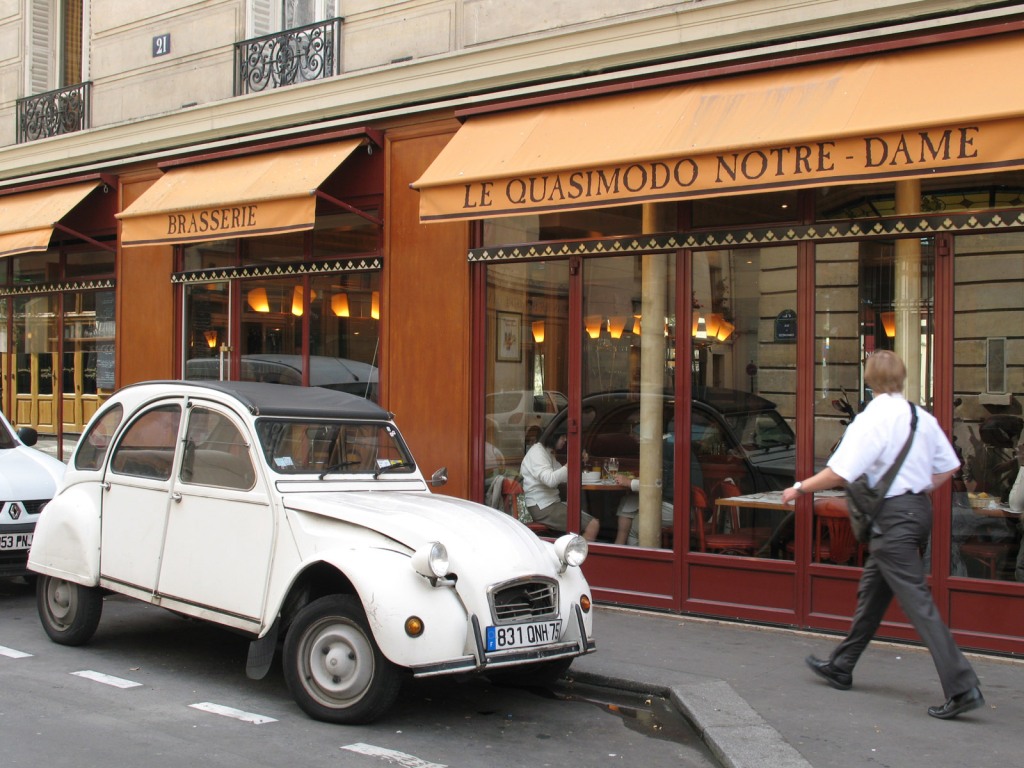
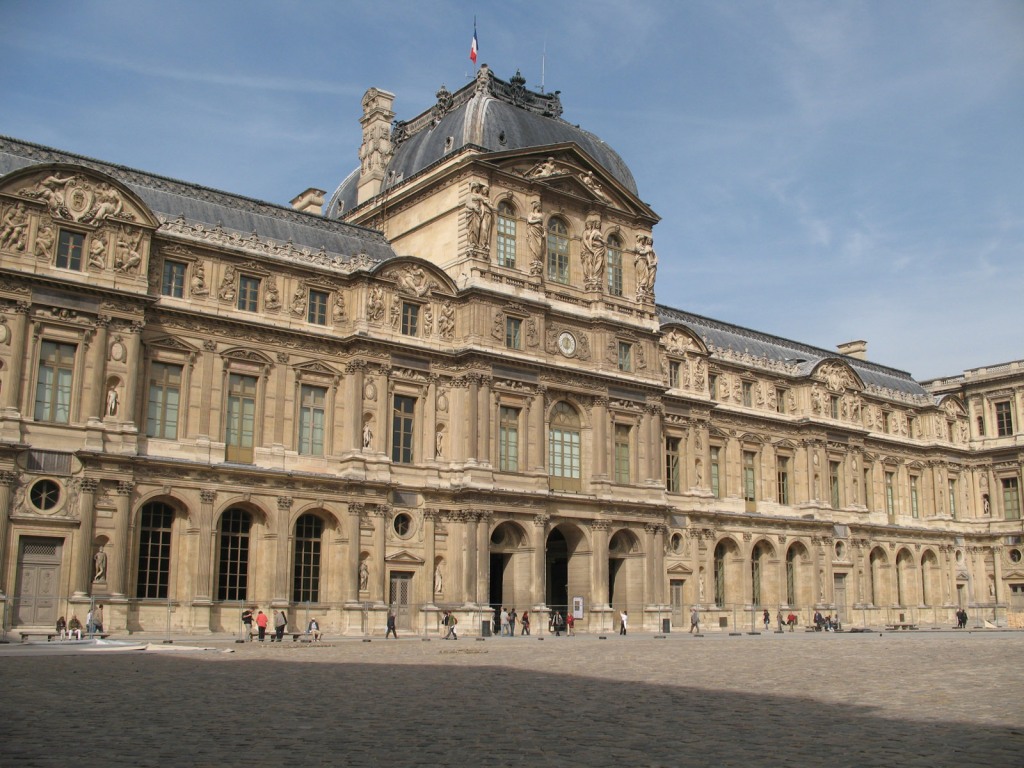
The world-famous Louvre Museum is housed in the palace of the same name, and hosts the cream of the art world’s achievements. It opened in 1793 during turbulent revolutionary times, but nowadays it’s revolting tourists that you need to watch out for. This is the view inside Cour Carrée.
The modern glass pyramid of the Louvre stands in stark contrast to the ostentatious Louvre Palace, and is considered by many purist Parisians to be a blight on their fair city. However, they didn’t much like the Eiffel Tower either when it first went up, so I’m sure they’ll get over it eventually.


Close up to the Louvre pyramid and looking through one of its 603 diamond windows, the concourse below can be seen reaching underneath the old buildings. The pyramid was designed by I. M. Pei of Hong Kong’s Bank of China fame, and was a response to the ever-increasing numbers of tourists jostling to get inside.
The queues weren’t too bad that day, perhaps as it was a Friday lunchtime, but unfortunately I didn’t have time to dash in and check out the Mona Lisa. Next time, I guess.
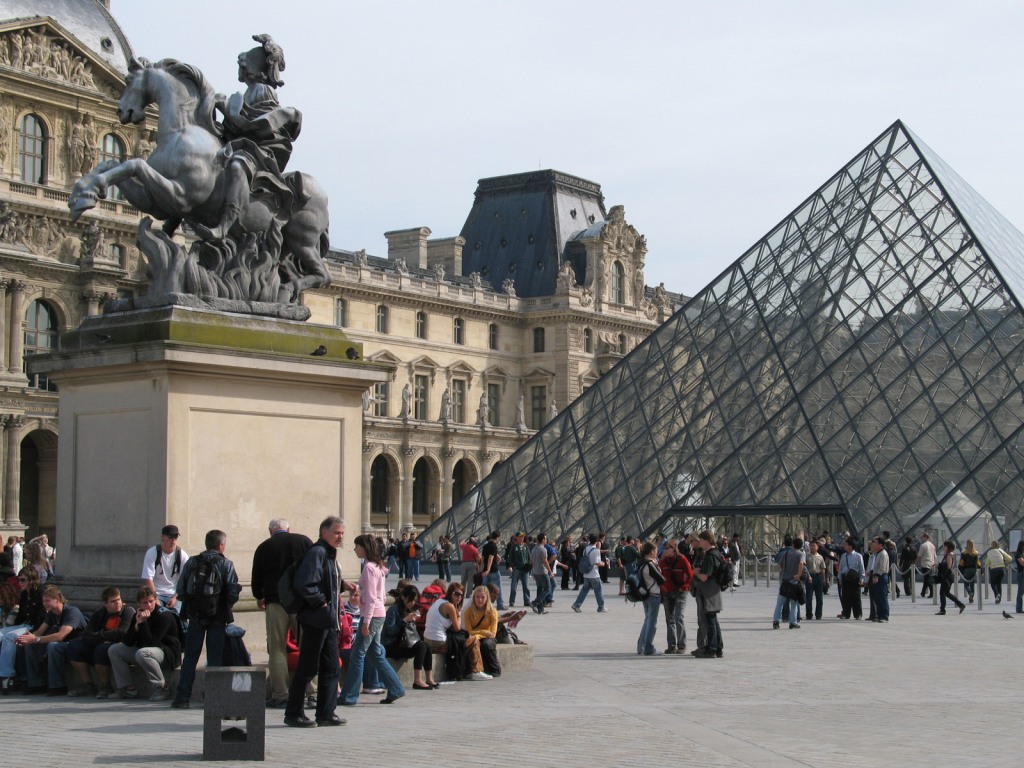

On to the Place de la Concorde, which at its centre features the Luxor Obelisk, twin to its partner still remaining in Egypt, and pinched by gifted to the French in the 1830s. The golden cap was only added in 1998, but is a replica of its surmised original form. It also marks the spot where Marie-Antoinette met her end in 1793.
Paris’s primary commercial thoroughfare, the Champs-Élysées, stretches from the Louvre all the way out to La Défense. Not a place to pick up a bargain, however.

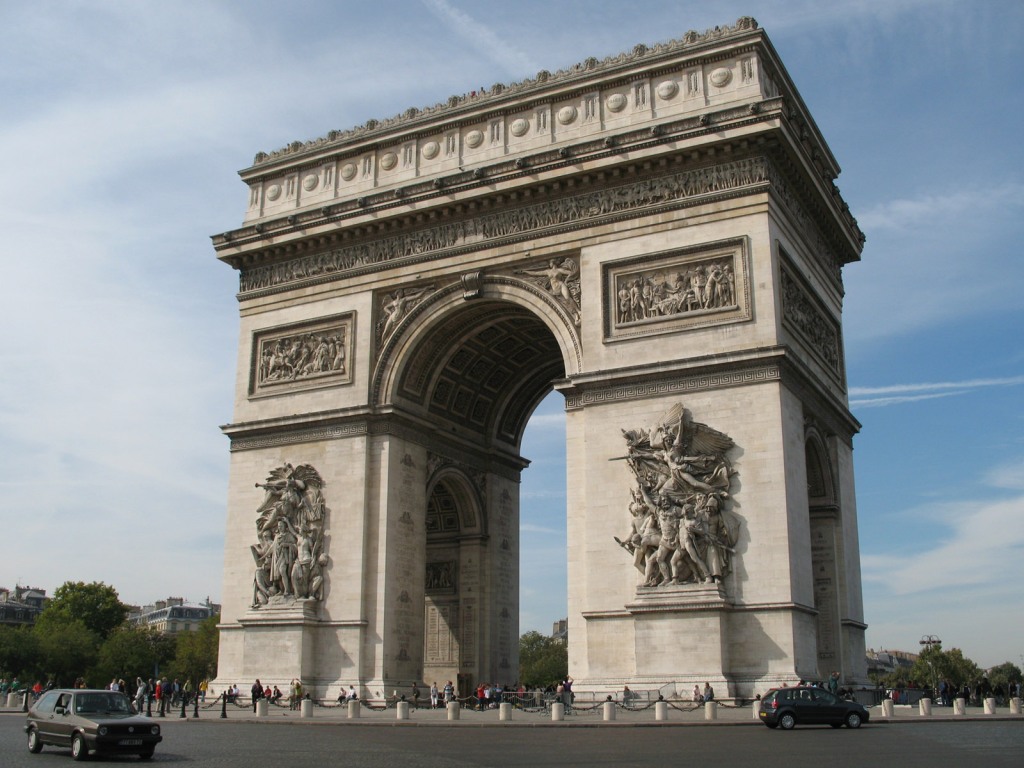
Halfway up the Champs-Élysées one chances upon the Arc de Triomphe, commissioned by Napoleon to celebrate his 1806 victory at Austerlitz. During construction however, he met his Waterloo and died in exile before he had the chance to see it through. Not to miss out on another monument, the Parisians continued construction and it was completed in 1836, now honouring all French lives lost in the Revolutionary and Napoleonic Wars.
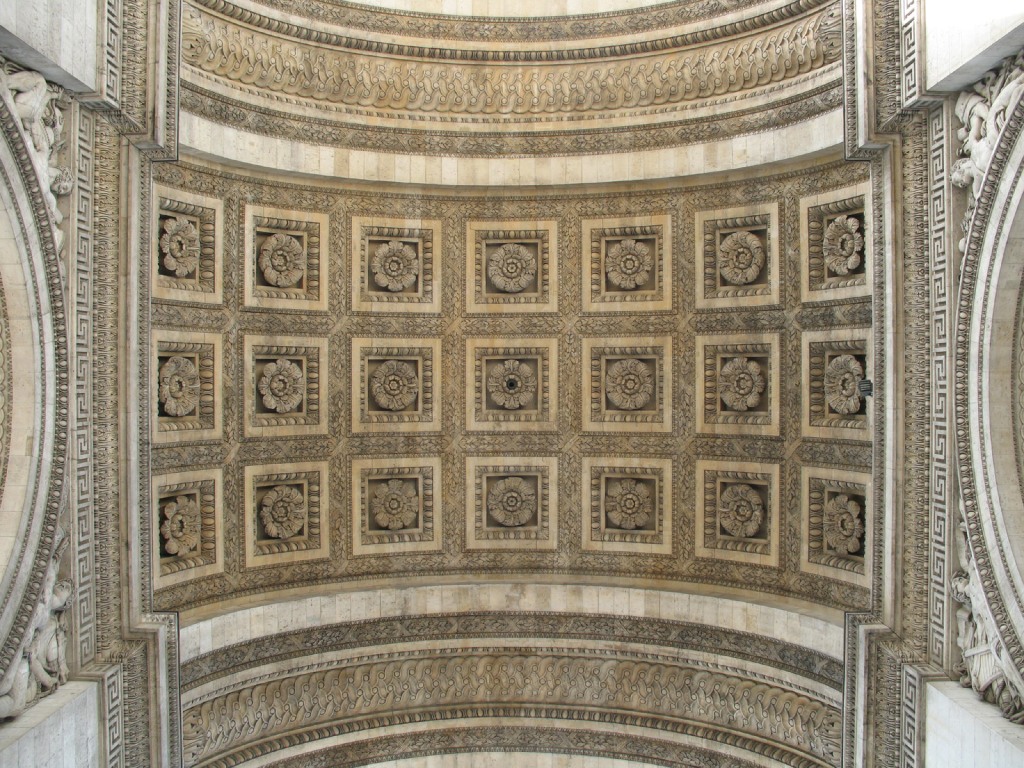
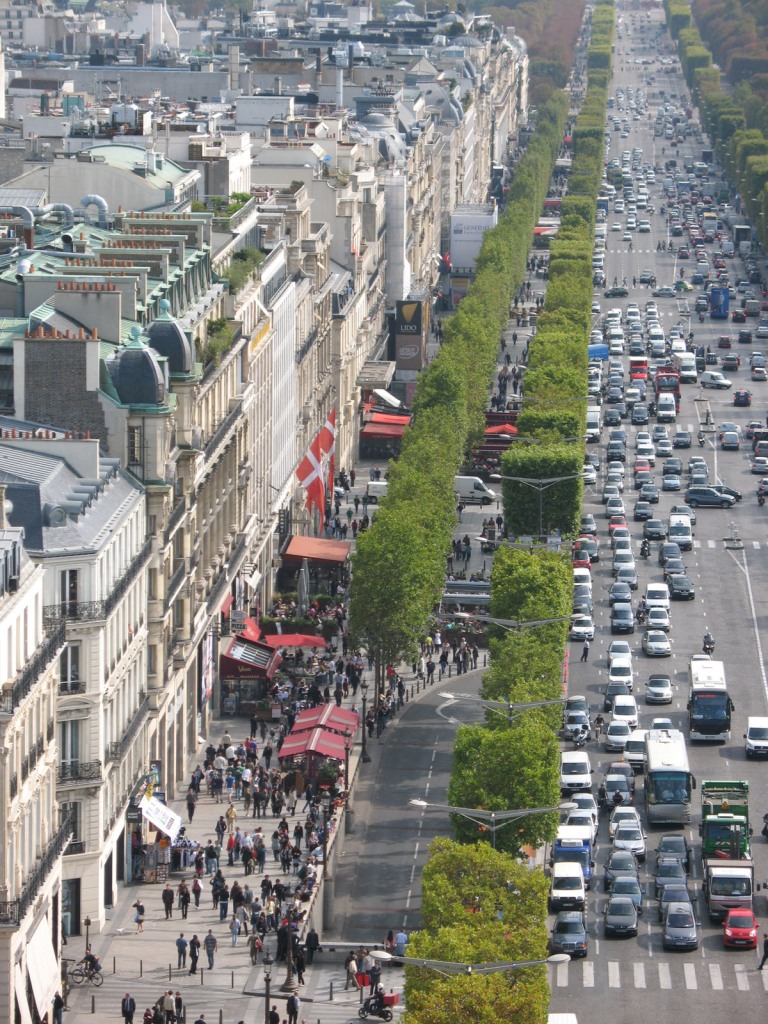
After hauling myself up the steps inside the Arc de Triomphe, I was presented with a great view back down the Champs-Élysées.
Looking away from the city centre, up towards the commercial district of La Défense, with the Arc de Triomphe’s modernist counterpart sitting at a very French slightly-off angle.


The Grande Arche of La Défense is built on the same line as the Champs-Élysées, the “Axe Historique” of Paris which runs between it and the Louvre. The arch was constructed to be wide enough such that the avenue Champs-Élysées could pass right through it, and indeed there is a highway tunnel directly underneath it.
Detail of the underside of the Grande Arche, showing the lift shafts disappearing into the top of the central void. The walls of the arch contain thirty-five levels of offices, and the upper tier is used for exhibitions and as a viewing gallery. Its total height is 110 metres.
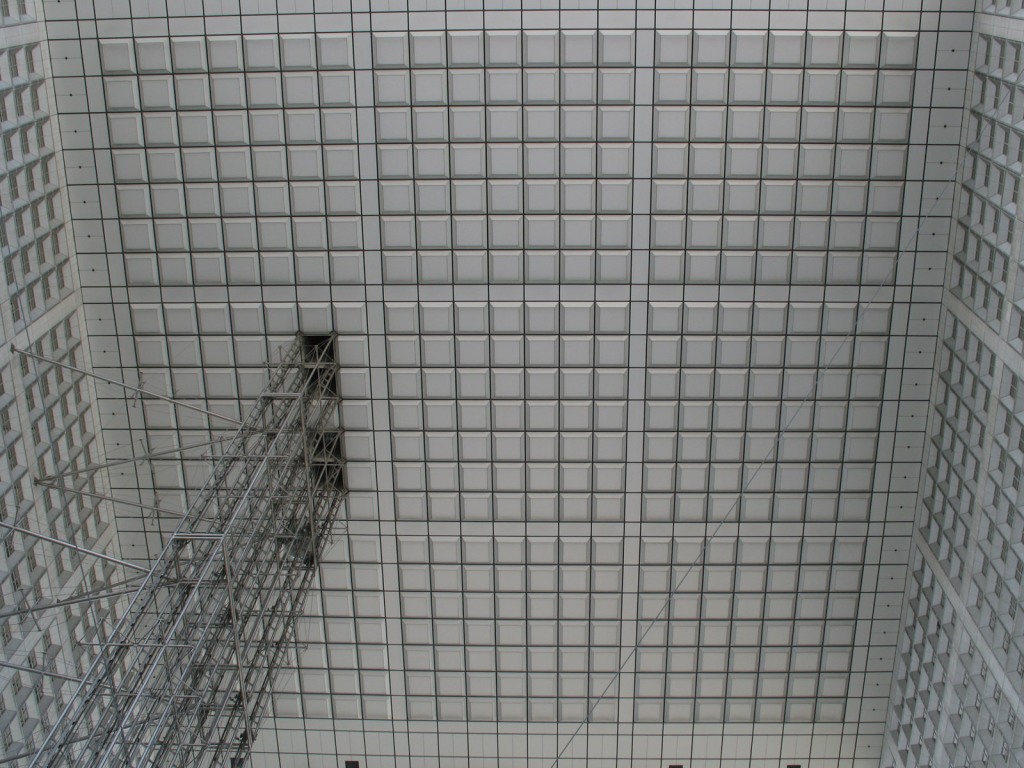
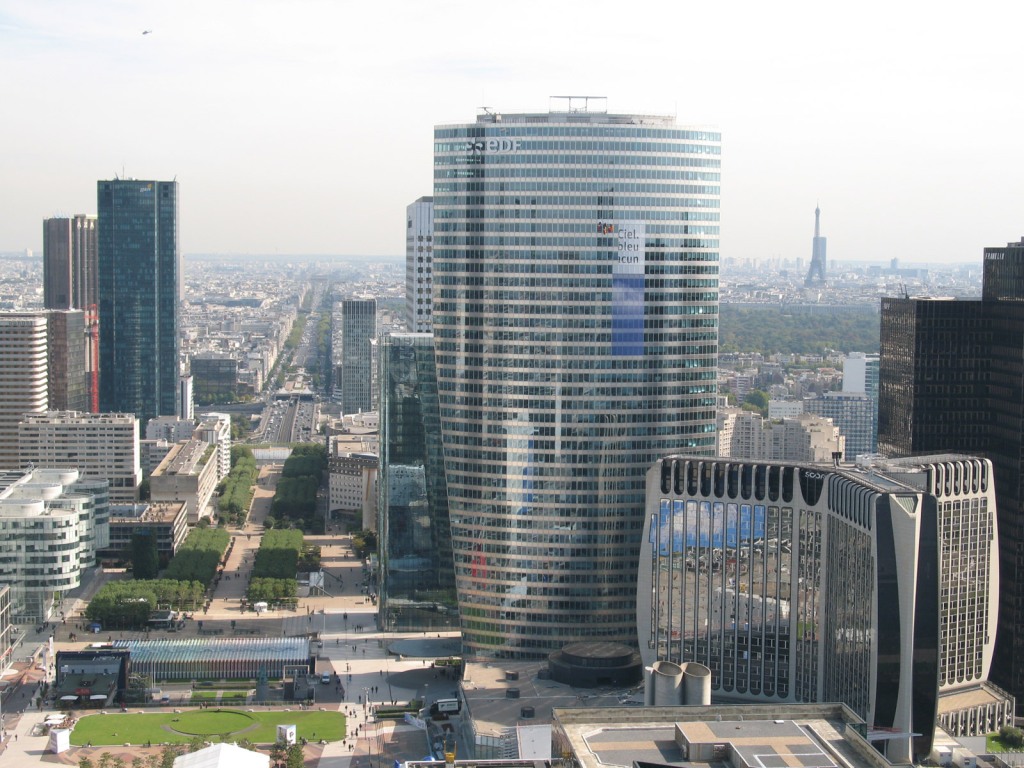
View from the top of the Grande Arche through La Défense down the Champs-Élysées to the Arc de Triomphe four kilometres distant, and towards the Eiffel Tower and Tour Montparnasse which form another axis through the city, aligned with the angle off the Arche.
Another view of the Eiffel Tower, this time from the top of the Arc de Triomphe. Its stark height is emphasised by zoning laws which don’t permit other nearby buildings to rise above seven storeys.
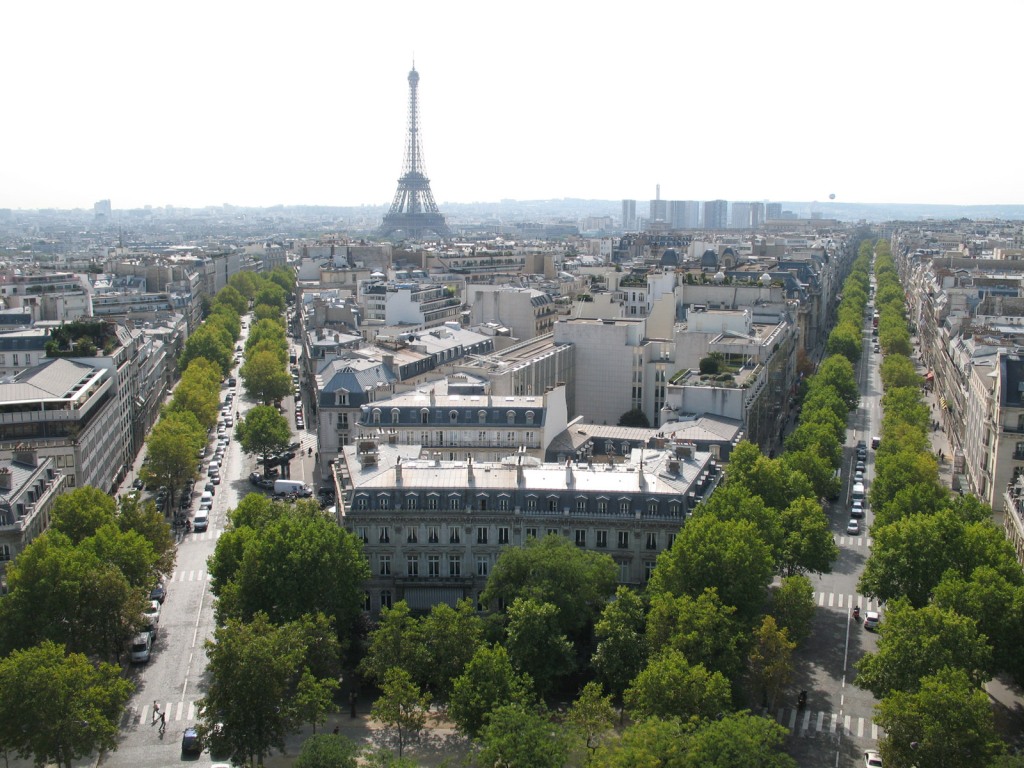

La Tour Montparnasse is the only skyscraper in the centre of Paris, as once it was completed in 1973 it was declared such a hideous blight upon the city that all skyscrapers were banished to La Défense, by the aforementioned zoning laws. There is an excellent view of the Eiffel Tower from the top, but I didn’t have time to check it out unfortunately.
La Tour Eiffel from a distance in the Champ de Mars gardens. The white object in the central gap is a giant rugby ball, as it was the time of the 2007 Rugby World Cup, hosted by France but won by South Africa.
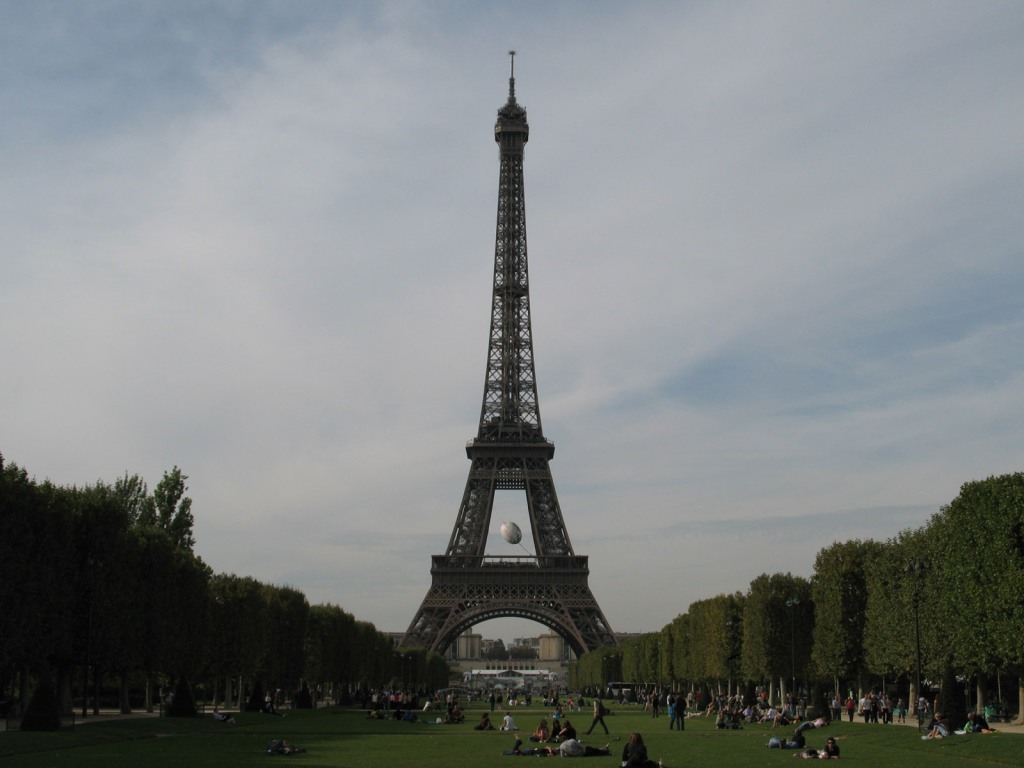

A more traditional shot of tower taken from near its base. The Eiffel construction company is still in operation today, it was responsible for the Millau Viaduct roadway in the south of France, the world’s tallest bridge.
The view directly up from underneath the base of the tower, with the second level partly obscured by le ballon de rugby géant.

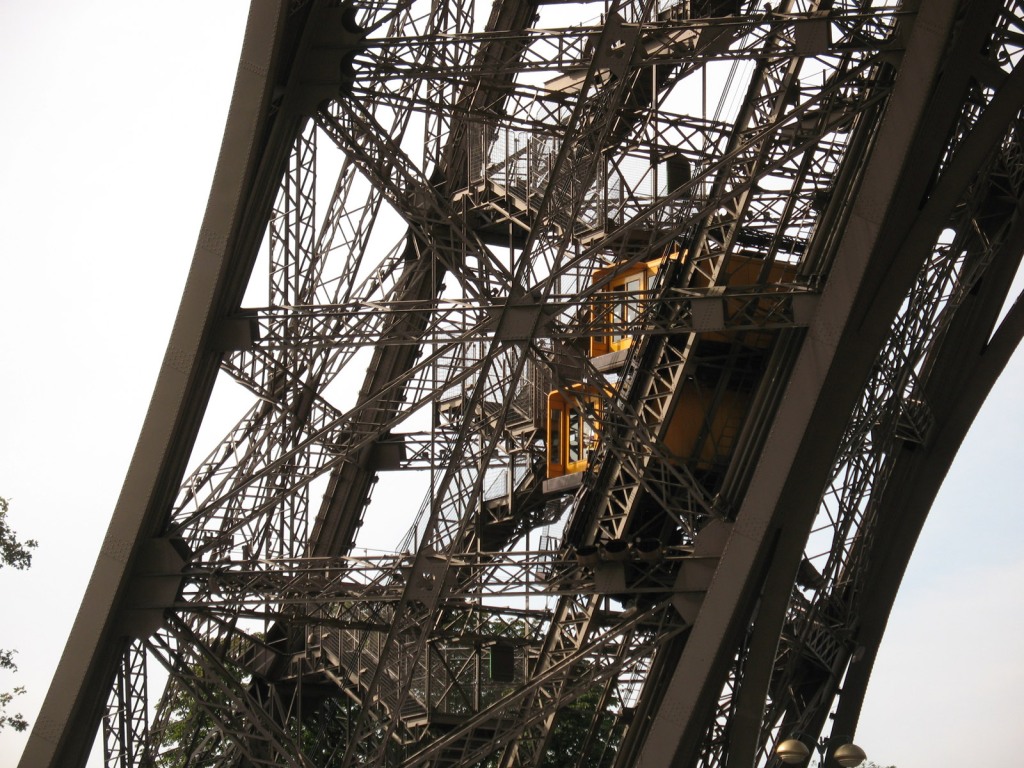
The famous angled double-decked lift system running up to the first level. With the changing angles between each level, a change in elevator is also required. If you’re feeling fit, you can also climb the six hundred steps to the second level, but lifts provide the only public access to the very top.
The golden dome of Les Invalides, which houses the tomb of Napoleon. His remains stayed on Saint Helena for nearly twenty years after his death in exile, but were finally returned to France in 1840 for enshrinement here. The building itself opened in 1861.


Former president Charles de Gaulle lends his name to the largest of Paris’s airports, and I pass through it quite frequently. Architecturally it is very interesting (albeit tarnished by a roof collapse in 2004), however the airport itself is a pain to navigate with its frustrating bus system, and short on budget fast food venues – they don’t even have a Burger King.
Created 2008 | Updated 2014, 2023
